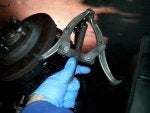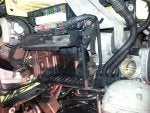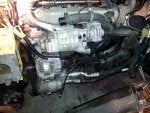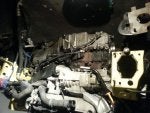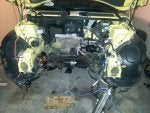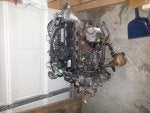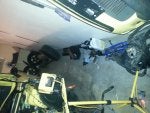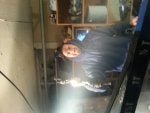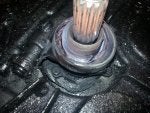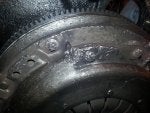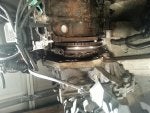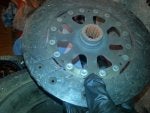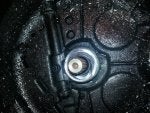Hello All,
This is my first post here, but I have scanned and read through many many threads.
I would say my abilities are the following:
1) Mechanically can wrench through a good amount of situations, but have little to no fabrication experience
2)I am in my last year of systems engineering, so electrically I have an idea of what’s going on in the low voltage domain; but with basic components such as diodes and caps and such. Relays and contactors and other switches have been a learning experience, and dealing with higher voltage has been confusing at times. But it has been a great deal fun learning and comparing circuits to find similarities between them.
3)Software such as MATLAB for modeling I am quite comfortable with. I created my own constant velocity model that works off of topography data retrieved from google maps. I am currently trying to integrate another model that I have been referencing from a textbook, but it has proven to be difficult. I am hoping this will give me the ultimate model; it will be able to give me range based on DOD, or motor output power vs time etc.
What I am designing my conversion to do:
1) drive 80 - 100km
It is quite "hilly" for 20km's of the journey, 26km are freeway, and the last is city driving
2) top speed around 90-100km/h
3) regen capable
4) around $15k
Some Spec’s of the Mini:
1)2513lbs -> 1140kg
2)FWD
3)6sp Manual transmission
4)Power steering [will be going manual to save power and weight (not sure how much the weight reduction will positively effect the result but, what the heck)]
Some components I am considering:
Please let me know what you think!
1)HPEVS AC-50 Kit
I don’t necessarily want a kit, but this deal is pretty sweet
2) CALB 3.2V 100Ah batteries
3) J1772 and AVC2 charging components
I currently have a preliminary circuit diagram. I say preliminary because I have not chosen the components, but rather drawn what I believe to be a safe, reliable circuit.I am wanting to work in the automotive sector and obviously, the green side of it!! This has been, and continues to be, a great learning curve. So all advice is greatly appreciated!
I am hoping until I figure out what engine and motor controller to use, that you guys would be able to tell me what is wrong with my circuit. I really want this to be a great learning experience about how to build in safety and reliability into circuits, and also just hear what you guys have to say about EV’s!
To give credit where credit is due, these are the two places I referenced my circuit from:
1) http://www.diyelectriccar.com/forums/showthread.php/why-would-pre-charge-resistor-relay-47163.html
2)http://www.evprogress.org/
Oh by the way, I am selling the 1.6L Tritec engine so if anyone wants to buy… well let me know.
This thread is going to serve as my progress report as time goes on.
Cheers!
This is my first post here, but I have scanned and read through many many threads.
I would say my abilities are the following:
1) Mechanically can wrench through a good amount of situations, but have little to no fabrication experience
2)I am in my last year of systems engineering, so electrically I have an idea of what’s going on in the low voltage domain; but with basic components such as diodes and caps and such. Relays and contactors and other switches have been a learning experience, and dealing with higher voltage has been confusing at times. But it has been a great deal fun learning and comparing circuits to find similarities between them.
3)Software such as MATLAB for modeling I am quite comfortable with. I created my own constant velocity model that works off of topography data retrieved from google maps. I am currently trying to integrate another model that I have been referencing from a textbook, but it has proven to be difficult. I am hoping this will give me the ultimate model; it will be able to give me range based on DOD, or motor output power vs time etc.
What I am designing my conversion to do:
1) drive 80 - 100km
It is quite "hilly" for 20km's of the journey, 26km are freeway, and the last is city driving
2) top speed around 90-100km/h
3) regen capable
4) around $15k
Some Spec’s of the Mini:
1)2513lbs -> 1140kg
2)FWD
3)6sp Manual transmission
4)Power steering [will be going manual to save power and weight (not sure how much the weight reduction will positively effect the result but, what the heck)]
Some components I am considering:
Please let me know what you think!
1)HPEVS AC-50 Kit
I don’t necessarily want a kit, but this deal is pretty sweet
2) CALB 3.2V 100Ah batteries
3) J1772 and AVC2 charging components
I currently have a preliminary circuit diagram. I say preliminary because I have not chosen the components, but rather drawn what I believe to be a safe, reliable circuit.I am wanting to work in the automotive sector and obviously, the green side of it!! This has been, and continues to be, a great learning curve. So all advice is greatly appreciated!
I am hoping until I figure out what engine and motor controller to use, that you guys would be able to tell me what is wrong with my circuit. I really want this to be a great learning experience about how to build in safety and reliability into circuits, and also just hear what you guys have to say about EV’s!
To give credit where credit is due, these are the two places I referenced my circuit from:
1) http://www.diyelectriccar.com/forums/showthread.php/why-would-pre-charge-resistor-relay-47163.html
2)http://www.evprogress.org/
Oh by the way, I am selling the 1.6L Tritec engine so if anyone wants to buy… well let me know.
This thread is going to serve as my progress report as time goes on.
Cheers!


